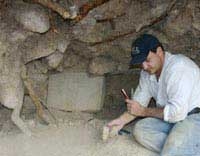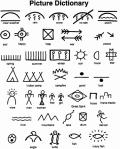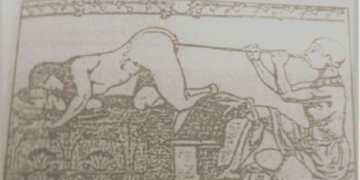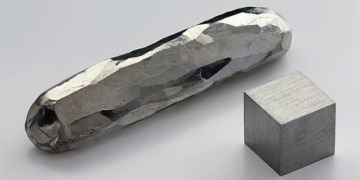Along the Tysa River in western Ukraine, an ancient human species left behind something that could reshape the narrative of history.
At first glance, what researchers discovered appears to be just a strange stone. However, it is an invaluable archaeological treasure, as it represents the earliest evidence of human presence in Europe. Given the artifact’s age of 1.42 million years, it belongs to a different human species.
This treasure was found at the Korolevo archaeological site on the banks of the Tysa River in western Ukraine, supporting the hypothesis that this continent was populated by humans migrating from the East and Southeast, according to Sci-News.
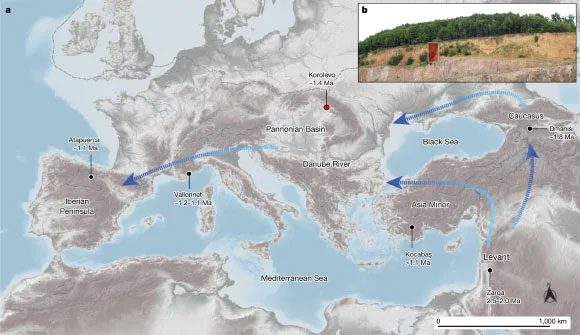
Another human species traversed Europe by moving around the West Asian region, reaching Ukraine and gradually advancing towards Western Europe – (Photo: NATURE).
To the east of Europe lies a significant site in Dmanisi, Georgia, where sediment layers contain human skulls and stone tools dating back approximately 1.85 to 1.78 million years.
According to Dr. Roman Garba from the Institute of Archaeology and the Institute of Nuclear Physics at the Czech Academy of Sciences and his colleagues, the trail from Africa to Dmanisi, through the “corridor” of the Levant, aligns with the Mode-1 stone artifacts found in the Zarqa Valley of Jordan.
Jordan serves as a gateway between Asia and Africa, with artifacts from Zarqa dating back about 2.5 million years.
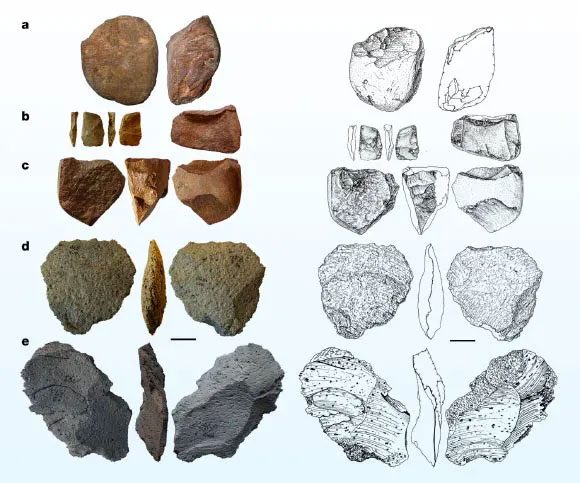
Stone tools excavated in Ukraine – Photo: NATURE
Thus, the historical narrative can be rewritten as follows: Another human species from Africa gradually migrated to Jordan to delve deeper into the Levant—the “Fertile Crescent” where many Middle Eastern countries exist today—and then continued to advance into what is now Georgia.
From there, over millions of years, they journeyed to Europe.
The human species that created the stone tools discovered in Ukraine has been identified as Homo erectus, a highly significant species within the genus Homo that may encompass around ten different species.
We, Homo sapiens, also belong to this genus but are the youngest species, while Homo erectus may be one of the oldest, having appeared on the planet over 2 million years ago.
They introduced numerous innovations that created a human world vastly different from that of their predecessors, the archaic apes.
The most unique aspect was the ability to manufacture stone tools in a “industrial” manner, adhering to a common technique passed down through generations, gradually improving and upgrading.
This is not the first time artifacts from a different human species have emerged in Korolevo.
This land is rich in raw materials for humans of the Stone Age. Currently, with a layer of loess and paleosol accumulated to a depth of 14 meters, it promises to reveal countless more fascinating artifacts.
Artifacts from seven different periods have been excavated here since 1974, with the most recent dating back 30,000 years, while the oldest is the recently discovered treasure.
A new study has just been published in the scientific journal Nature.









































